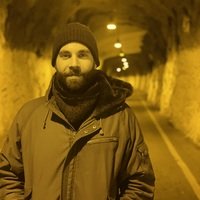23rd International Electroacoustic Composition Competition Música Viva 2022
Jury of the 2022 Jonty Harrison, Kees Tazelaar, Miguel Azguime
116 works from 34 Countries
Prize Winner 2022
23RD INTERNATIONAL ELECTROACOUSTIC COMPOSITION COMPETITION MÚSICA VIVA 2022
Jury of the 2022 edition Jonty Harrison, Kees Tazelaar, Miguel Azguime
RECEIVED 116 WORKS OF 30 COUNTRIES
Robert Seaback 1985, is a composer and sound artist from the US currently based in Oslo, NO. His music expresses corporeality, the hyperreal, digital stasis, and continuums between—integrating voices, instruments, soundscapes, and synthetic sources through digital techniques. He has worked in different mediums including spatial audio, mixed music for ensemble, electroacoustic improvisation, and sound installation.
Robert has a PhD in composition from the University of Florida and degrees in music from Mills College (MA) and Northeastern University (BS). He is currently an Artistic Research Fellow at the Norwegian Academy of Music, working with Natasha Barrett. His music has been presented at international events such as ICMC, NYCEMF, Sonorities, MA/IN, and the ISCM World New Music Days, and has been recognized with awards from IEM & VDT 3D Audio Production Competition, Xenakis International Electronic Music Competition, ASCAP/SEAMUS, University of Florida, and Mills College.
Lightness in Transit (2021-22) | for High Order Ambisonics | 10:10
Lightness in Transit derives sound archetypes from subway and commuter train recordings made in Oslo. The sonic residue of metal, wind, engines, and movement contribute to the sensual, corporeal experience of the music. Against this backdrop, a voice continually emerges and recedes, oscillating between song-like utterance and digital stasis. Sources were recorded from Nationaltheatret Station, Holstein, and mezzo-soprano, Marika Schultze.
After an initial period of experimentation, my intention for Lightness in Transit became to mirror the visual and vibrational pulses of trains from different sonic perspectives—as an observer and as a traveler: enclosed, underground, or emerging—and in ways that traverse between fantasy and hyperreality. In the latter case, sound field recordings are presented in raw states, with subtle additions to enhance the scenes.
Another association which came to mind at the outset was the similarity of the raw sounds of trains in a steady state of movement to the bleak noise-scapes of some industrial music. This inspired the opening motive and other parts of the work.

